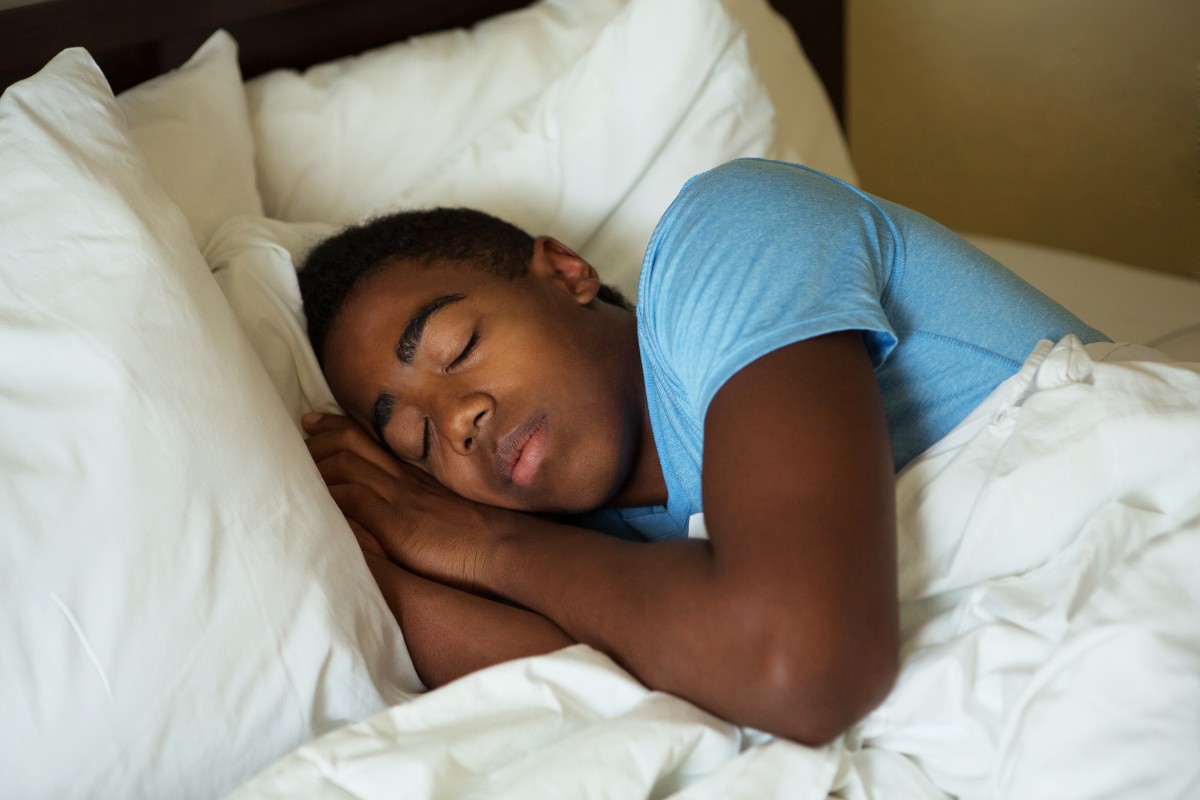
Teens’ Body Clocks are Two Hours Behind Adults, According to Sleep Expert
Teenagers can get unfair criticism for their sleep patterns. From staying up until the midnight hours, to not emerging from their bedrooms until early afternoon, they can be called night owls at best, and downright lazy at worst. While some parents might think their teens are up all night scrolling on their phones or gaming, the truth about teenage sleep patterns is much more biological.
Our resident sleep expert, Dr Sophie Bostock, has revealed that some children simply may not be able to help this transition into a night owl state during their teen years. Fortunately, while they can’t help that their body clock has shifted back by a couple of hours, they will usually grow out of it.
We explore the reasons behind the switch, how much sleep teens really need, and what parents can do to best support their teenagers’ sleep patterns at this time.
Explaining Teenage Sleep Patterns
Teenagers often get a bad reputation as being lazy. But there are some physiological implications that they can't help. Discover what our Sleep Expert has to say on the topic here.
Why do teenagers’ sleep patterns change?
As we age, our sleep habits naturally shift (1). As Dr Sophie explains:
“During adolescence, studies have shown that the timing of teens’ body clocks can become delayed by an average of two hours, making teens sleepy later in the day, and making it harder for them to wake up in the morning.
“As children age, the timing of melatonin release (a signal to the body and brain to prepare for sleep) gets gradually later. For children under 10, melatonin is released before 8pm, whereas for teenagers, this can be more than 2 hours later, at around 10:30-11pm, meaning their bedtime often shifts back dramatically, which can be a big shock for parents.”
This shift is also not easy for teens to handle, and it can have a huge impact on every aspect of their lives, manifesting itself in several different ways that parents may recognise, including:
- Difficulty waking up, and grogginess on waking
- Not feeling sleepy, or difficulty falling asleep, before 10pm or so, or in many cases, later in the evening or into the early hours
- No appetite for breakfast in the morning before school
- Lying in at the weekends by several hours
- Excessive sleepiness in the late afternoon
Unfortunately, they still have to work around ‘normal’ timetables and expectations, so the daily battle to get your teenager up for school isn’t all their fault. And it can even affect them during the rest of the day by leading to difficulty concentrating at school, more impulsive behaviour, problems with emotional regulation, irritability and low mood, lack of energy, low motivation and even frequent health infections.
When will your teen become a night owl?
So, when can you expect your teen to potentially become a night owl? Sophie advises:
“From around age 9, there is a faster transition towards a night owl preference, partly due to the onset of more hormones. This peaks between the ages of 15 and 17, which is typically when we can expect to see the greatest difficulty falling asleep early and then waking up early. For boys, this stays relatively stable for a decade, but girls appear to rebound more quickly towards a slightly earlier morning preference in their twenties.”
This huge biological shift might also affect teen boys and girls differently. For example, night owl behaviour in girls tends to peak at 15.7 years old, whereas it’s 17.2 for boys (2). For women, this is often the start of poorer sleep in general, as menstrual cycles, pregnancy, and menopause can plague the fairer sex for many years.
So that begs the question: How much sleep do teens need?
How much sleep should a teenager get?
Most teens need between 8 and 10 hours of sleep each night (3). So, how can parents help their children get the sleep they need during these times of change?
Spoiler: It might not involve taking away screens, which have often been to blame for poor teen sleep!
Dr Sophie explains:
“The evidence suggests that blue light from devices only has a minor role in keeping teens awake at night, and when it comes to sleep, technology is not all bad. It’s about what we use it for, for how long, and at what time. For people who get easily distracted by their phones or video games, strict controls limiting access to screens in bed could be beneficial.
“However, some teens may use technology to help distract them from negative thoughts, to listen to relaxing music, or to meditate. If we remove tech from the bedroom without implementing any other strategies to help them deal with negative thoughts, they may simply ruminate, and focus on feelings of missing out, and detachment.”
Dr Sophie’s Top 3 Tips For Supporting Sleep Patterns In Teens
If you want to promote better sleeping habits in teens, here are Dr Sophie Bostock's top three tips:
Set a bedtime
Having a regular, agreed-upon bedtime can help teens get more sleep. Studies have shown that teens with a 'set' bedtime get an average extra 20 minutes per night (4), which adds up over the course of a week. However, teenagers need to feel bought into any strategies to help them sleep, so work with them to agree on a bedtime that is realistic and beneficial for you all.
Discuss and agree on expectations about tech use
Parental restrictions on technology use before bed have had mixed effects on sleep. Research suggests that having a cut-off time for tech use does lead to earlier bedtimes (5), but this only led to longer sleep duration when teens complied with wider advice about wind-down routine, so make sure they’re well equipped with the tools to also feel relaxed.
Bright light in the morning and during the day
To help night owls adjust their body clocks to early mornings, they need exposure to bright light in the mornings, and especially within the first hour after waking.
The ideal is to get outside into daylight for at least 15 minutes. Even if you can’t get exposure to bright light first thing, aim to get outside as much as possible during daylight hours, since this reduces sensitivity to light at night.
When it’s dark outside during winter mornings, a dawn simulation alarm clock (which gets gradually brighter before alarm time) can help night owls of all ages to wake up more comfortably.
At least an hour before the chosen bedtime, start to dim overhead lights and switch off screens. You can also try using blackout blinds to make the bedroom as dark as possible, or an eye mask, to help regulate sleep patterns in teens.
Improving sleep patterns in teens
Understanding teenage sleep patterns can be a real eye-opener for parents navigating these challenging years. As Dr Sophie Bostock explains, much of what might look like laziness is actually driven by biology, which your child can’t control. But understanding and supporting these changes can help them rest better and thrive.
If you found this guide useful, don’t forget to explore more expert advice and sleep tips on our Sleep Hub.
And if you’re looking to upgrade your teenager’s sleep environment, take a look at our wide range of beds and mattresses designed to support quality sleep regardless of age.
Sources
- https://www.sciencenorway.no/sleep-teenagers/teenagers-become-night-owls-during-puberty/2171444
- https://www.researchgate.net/publication/315808861_From_Lark_to_Owl_Developmental_changes_in_morningness-eveningness_from_new-borns_to_early_adulthood
- https://www.sleepfoundation.org/teens-and-sleep
- https://www.technologynetworks.com/neuroscience/news/study-shows-teenagers-do-need-a-bedtime-374476
- https://www.calm.com/blog/screen-time-before-bed

Gemma Henry - Content Lead
Gemma finds sleep fascinating and describes the discovery aspect of her role as eye-opening. Her keen eye for detail and dedication to thorough research ensures that Bensons customers get the informative sleep-based advice they're looking for.